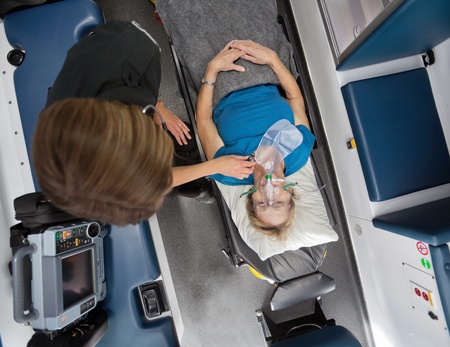1. Introduction to Electrical Stimulation Therapy
Electrical stimulation therapy, often called e-stim, is a widely used technique in American physical therapy clinics today. This therapy uses electrical currents delivered through electrodes placed on the skin to stimulate nerves and muscles. It has become an important part of treatment plans for patients recovering from injuries, surgeries, or chronic conditions. The use of electrical stimulation helps improve muscle strength, reduce pain, promote healing, and restore function.
Historical Context
The roots of electrical stimulation therapy can be traced back to the 18th century when scientists began experimenting with electricity and its effects on the human body. Over the decades, advancements in technology and medical research have helped refine these techniques. In the United States, e-stim started gaining popularity in rehabilitation settings during the mid-20th century. With ongoing innovations, this therapy continues to evolve and remains a staple in modern physical therapy practices.
Current Applications in American Physical Therapy
Today, physical therapists across the U.S. use electrical stimulation for a variety of purposes. Its applications range from treating acute injuries to managing chronic diseases. Here are some of the most common ways e-stim is used:
| Application | Description |
|---|---|
| Pain Management | Reduces pain signals by stimulating nerve fibers, commonly used for conditions like back pain or arthritis. |
| Muscle Strengthening | Helps rebuild muscle after injury or surgery by causing controlled muscle contractions. |
| Edema Reduction | Decreases swelling by improving blood flow and lymphatic drainage. |
| Tissue Healing | Promotes healing by increasing circulation to injured tissues. |
| Neuromuscular Re-education | Aids in restoring normal movement patterns after neurological events like strokes. |
With continual technological advancements, the future of electrical stimulation therapy promises even more effective and accessible treatments for patients throughout America. As we explore these innovations, it’s clear that e-stim will remain a key player in helping people regain their health and mobility.
2. Recent Technological Advancements
Innovative Devices Transforming Electrical Stimulation Therapy
In recent years, electrical stimulation therapy has seen exciting technological breakthroughs that are changing the way physical therapists help patients recover. New devices are now smarter, more portable, and easier to use. These advancements make therapy sessions more effective and comfortable for people of all ages.
Smart Technology Integration in Physical Therapy
One major trend is the integration of smart technology. Many modern electrical stimulation devices can now connect with smartphones or tablets using Bluetooth. This allows therapists to customize treatment plans, track patient progress, and even adjust settings in real time. Patients can also receive reminders, feedback, and instructions through easy-to-use mobile apps. This tech-savvy approach fits well with the American lifestyle, where convenience and personalization matter.
Comparison of Traditional vs. Modern Electrical Stimulation Devices
| Feature | Traditional Devices | Modern Smart Devices |
|---|---|---|
| User Interface | Manual buttons and dials | Touchscreens & mobile app controls |
| Data Tracking | None or paper records | Automatic digital tracking & reports |
| Customization | Limited preset programs | Personalized programs based on user feedback |
| Portability | Larger and less convenient | Compact & wearable designs |
| Remote Monitoring | No remote features | Therapist can monitor progress remotely |
How These Advancements Improve Treatment Outcomes
The integration of innovative devices and smart technology is leading to better results for patients. Here’s how:
- Personalization: Therapists can adjust treatments based on each patient’s unique needs.
- Motivation: Instant feedback from devices helps keep patients engaged with their rehab exercises.
- Convenience: Wearable devices allow some therapy to be done at home, saving time and making it easier for busy Americans to stick to their routines.
- Better Tracking: Digital records help therapists measure improvements more accurately and quickly modify treatment plans if needed.
- Collaboration: Remote monitoring enables therapists to support patients between in-person visits, making care more continuous.
This new wave of technology is not just about fancy gadgets—its about creating meaningful improvements in how physical therapy is delivered and experienced across the U.S.

3. Personalized Medicine and Patient-Centric Approaches
How Technology is Transforming Electrical Stimulation Therapy
Personalized medicine is quickly becoming the gold standard in healthcare, especially in physical therapy. With the rise of data-driven assessments, wearable technology, and artificial intelligence (AI), electrical stimulation therapy can now be tailored to each individual’s unique needs. This approach not only increases effectiveness but also improves patient satisfaction.
Data-Driven Assessment: Understanding Each Patient
Using digital tools and advanced software, therapists can gather detailed information about a patient’s muscle activity, movement patterns, and recovery progress. This data helps create a customized treatment plan, making electrical stimulation more precise and effective. For example, sensors may track how a patient responds to different stimulation settings, ensuring the therapy is always optimized.
Wearable Technology: Continuous Monitoring and Feedback
Wearable devices such as smart patches or wireless electrodes allow patients to receive electrical stimulation at home or during daily activities. These devices collect real-time data on muscle response and send it directly to the therapist. This makes it easy to adjust therapy without frequent clinic visits, leading to better outcomes and more convenient care.
| Wearable Device Feature | Benefit for Patients |
|---|---|
| Real-time monitoring | Immediate feedback on progress |
| Remote adjustments | Less need for in-person appointments |
| User-friendly design | Easier self-management at home |
| Data sharing with therapists | More accurate and timely therapy modifications |
The Role of AI: Smarter, Faster Customization
Artificial intelligence helps therapists analyze large amounts of patient data quickly and accurately. By recognizing patterns that might be missed by humans, AI can suggest adjustments to electrical stimulation settings based on each person’s progress. This leads to truly individualized care where treatments are updated in real time as the patient improves.
Every Patient is Unique: Putting People First
The combination of these technological innovations means that electrical stimulation therapy is no longer a “one-size-fits-all” solution. Therapists can focus on what works best for each person, making rehabilitation more efficient and enjoyable. In this new era of physical therapy, technology supports both the clinician and the patient every step of the way.
4. Telehealth and Remote Monitoring
Expanding Access to Electrical Stimulation Therapy
Telehealth is transforming how patients in the United States receive electrical stimulation therapy as part of their physical rehabilitation. With the help of digital platforms, more people can now connect with physical therapists from the comfort of their own homes. This is especially important for those living in rural areas or individuals with limited mobility who may find it challenging to visit a clinic regularly.
How Remote Monitoring Works
Remote monitoring uses wearable devices and mobile apps that track patient progress in real time. Patients can use these technologies to share data—such as muscle activity, pain levels, and usage of electrical stimulation units—with their healthcare providers. Therapists can then adjust treatment plans based on this information without requiring an in-person appointment.
Benefits for Patients and Providers
| Benefit | Description |
|---|---|
| Convenience | Patients can receive care at home, reducing travel time and costs. |
| Consistency | More frequent check-ins help maintain regular treatment schedules. |
| Personalized Care | Treatment plans are updated in real-time based on patient feedback and data. |
| Wider Access | Patients in remote or underserved areas have better access to therapy. |
Real-World Example: Home-Based Electrical Stimulation Programs
Many clinics now offer home-based electrical stimulation kits that come with instructional videos and remote monitoring features. Physical therapists can virtually guide patients through setup, ensure proper electrode placement, and monitor progress through connected apps. This approach not only saves time but also empowers patients to take a more active role in their recovery process.
The Future of Continuity in Physical Therapy Care
The integration of telehealth and remote monitoring into electrical stimulation therapy is making physical rehabilitation more flexible and responsive. As technology continues to advance, we can expect even more user-friendly tools that keep patients connected with their care teams, ensuring better outcomes across the country.
5. Future Directions and Implications
Insights into Ongoing Research
Researchers across the United States are pushing the boundaries of what electrical stimulation therapy can achieve in physical therapy settings. Universities and tech companies are collaborating to develop smarter devices that can personalize treatment for each patient. For example, wearable stimulators are being tested for their ability to monitor progress and adjust intensity automatically. Scientists are also exploring new waveforms and frequencies to target specific muscle groups more effectively, aiming to boost recovery speed and outcomes for people with conditions like stroke, spinal cord injury, or chronic pain.
Anticipated Trends in Electrical Stimulation Therapy
The future of electrical stimulation is closely tied to digital health technologies and data-driven care. Here are some trends shaping the field:
| Trend | Description | Impact on Care |
|---|---|---|
| Wearable Technology Integration | Lightweight, wireless devices that patients can use at home or on-the-go. | Increases access and encourages regular use outside the clinic. |
| Personalized Treatment Algorithms | AI-driven software adjusts stimulation based on individual needs. | Makes therapy more effective and comfortable for each patient. |
| Remote Monitoring & Telehealth Compatibility | Therapists track progress and modify plans through connected apps. | Saves time, reduces travel, and supports rural or underserved communities. |
| Enhanced Patient Engagement Tools | User-friendly interfaces and gamification to motivate participation. | Keeps patients involved, improving long-term results. |
The Impact on Clinicians and Patients in the American Healthcare Landscape
As these technological innovations become mainstream, both clinicians and patients stand to benefit greatly. Physical therapists will have access to more precise data, allowing them to tailor interventions efficiently. This means less guesswork and faster adjustments when something isn’t working. Patients will enjoy greater convenience—imagine being able to continue therapy at home without sacrificing quality. These advances may also help reduce healthcare costs by preventing complications and minimizing the need for frequent office visits. In a system where value-based care is becoming the standard, these improvements could make a real difference in patient satisfaction and outcomes across diverse American communities.

